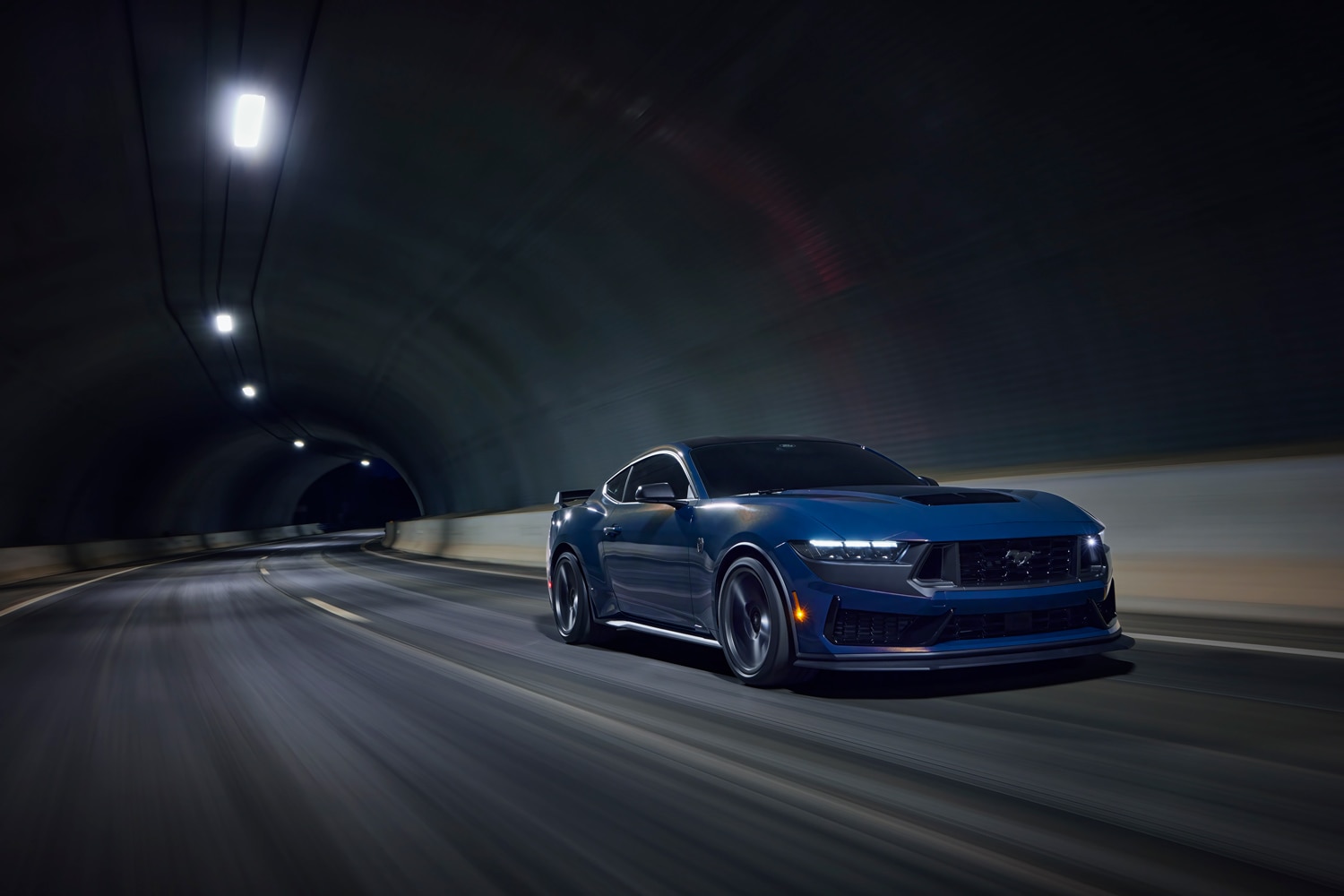These Are the 5 Most Powerful Mustangs Ford Ever Produced
While tuners have taken the Stang even further, these are the fastest factory-made models of all time.
Over the past six decades, Ford has produced many versions of the venerable Mustang. They've ranged from basic four- or six-cylinder models to turbocharged four-cylinders to V8s that could barely muster more than 100 horsepower thanks to emissions-strangling parts.
By the 2000s, though, even base-model Mustangs were leaving the factory packing as much as 300 horsepower. Throughout the Mustang's storied and sometimes rocky run, Ford has also peppered its lineup with high-performance Mustang models aimed at speed freaks and anyone who just wanted to out-muscle rival Chevrolet Camaro and Dodge Challenger owners.
 Ford
Ford
Now, as of late 2023, the Ford Mustang GTD is poised to become the most-powerful street-legal version of the iconic pony car to ever roll off the assembly line. That said, the $300,000 starting price and limited production numbers mean the Mustang GTD is sure to be hard to get.
Here, we turn to the five most powerful factory-made Mustangs Ford has ever built that you might have a reasonable chance of getting your hands on.
 Ford
Ford
2020 Ford Mustang Shelby GT500
760 horsepower
Prior to the wild Mustang GTD, the ultimate factory-made Stang was the 2020 Shelby GT500, which packs more horsepower than even some third-party tuners have given the car. Bestowing it with a supercharged 5.2-liter V8 paired with numerous upgrades to the brakes and suspension, Ford was able to get its 760 horsepower onto the road to best the 2020 Challenger Hellcat's 717 horses.
 Ford
Ford
2015 Ford Shelby GT350 Mustang
526 horsepower
The sixth-generation Mustang represented some of the most radical structural changes for the car since the late 1970s. Ford replaced the live rear axle with an independent rear suspension while making the car slightly smaller and more sporting. Not only did that make standard Mustangs more livable for people renting one on vacation, but it also prepared the performance models to turn up the power. The first Shelby GT350 of this generation used a 5.2-liter V8 with an unusual flat-plane crankshaft — similar to those used in Ferrari V8s — that let the engine rev higher than a typical V8.
 Ford
Ford
2024 Ford Mustang Dark Horse
500 horsepower
While the latest Mustang generation might be a heavily modified version of the previous iteration, Ford didn't forget to throw more power at what's otherwise a standard V8-powered GT. Arriving in mid-2023, the Mustang Dark Horse takes the GT's 480-hp engine and ups it to an even 500, thanks to various changes that allow the mill to rev to 7,500 rpm. As the possibility of a fully electric two-door Mustang looms, consider the Dark Horse something of a last hurrah.
 Ford
Ford
2007 Ford Mustang Shelby GT500
500 horsepower
Ford took the retro-inspired fifth-generation Mustang and also looked to the past for inspiration when it built an even faster version. The Shelby GT500 of the 1960s was massaged by legendary racing driver Carroll Shelby and his company to pack incredible power into a relatively inexpensive car. And Ford kept the same spirit in 2007 with a supercharged 5.4-liter V8, upgraded brakes and suspension, and even some racing stripes. Remember, at the time, 500 horsepower was a lot for a car costing less than $50,000.
 Ford
Ford
2021 Ford Mustang Mach 1
480 horsepower
Another name pulled from some of the earliest Mustangs, the Mach 1 was revived in earnest in 2004. Using the Mustang GT as a base, Ford added some minor exterior and interior styling differences and a little more power, similar to the recipe that created the original 1969 Mach 1. When it brought the name back in 2021 the automaker took the regular Mustang GT's 5.0-liter V8 and reworked it for an additional 20 horsepower. The Mach 1 was a better-equipped, more distinctive-looking model that turned heads and rivaled what Chevy and Dodge had to offer.
Written by humans.
Edited by humans.
 Zac Estrada
Zac EstradaZac Estrada is a Southern California-based reporter who has covered transportation, technology, and policy for a wide range of online and print publications.
Related articles
View more related articles